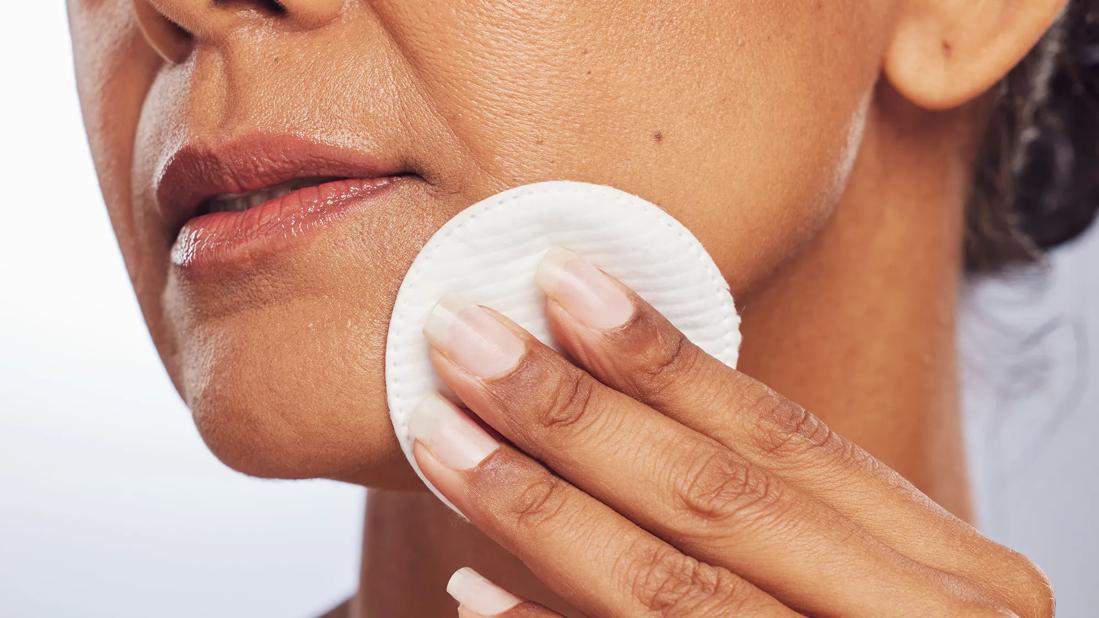Glycolic acid benefits skin tone, texture and pigmentation by exfoliating dead skin

Glycolic acid is one of the most common active ingredients in skin care products. But what does it do? And how should it be used?
Advertisement
Cleveland Clinic is a non-profit academic medical center. Advertising on our site helps support our mission. We do not endorse non-Cleveland Clinic products or services. Policy
Dermatology resident Angela Wei, MD, pulls back the curtain on glycolic acid and shares its many benefits.
Glycolic acid comes from sugarcane and is a type of alpha-hydroxy acid (AHA). AHAs are facial acids that are water-soluble (which means they dissolve in water, not oil, and typically work best on the surface of your skin). As the smallest AHA, glycolic acid can actually penetrate skin deeper than other AHAs. It’s used as an exfoliant to help get rid of dead skin cells and unclog pores. The result: Your skin appears brighter, smoother and more radiant.
“Since glycolic acid is so small, it can penetrate the skin more easily than other acids and be a bit more effective,” confirms Dr. Wei. “It helps loosen the connection that holds dead skin cells together on the surface of the skin, leading to fresher, smoother skin underneath.”
“Glycolic acid has an anti-aging component that helps improve the tone and texture of your skin,” says Dr. Wei.
Glycolic acid is also an exfoliant, which means it:
Advertisement
Be cautious about using products that contain glycolic acid if you have:
“Most people can benefit from glycolic acid,” notes Dr. Wei. “But if you have sensitive skin or skin that’s not healing, it could cause more irritation.”
Glycolic acid is also generally safe in pregnancy when used in low concentrations, but if you’re pregnant or breastfeeding, you should still check with your healthcare provider before using it.
Start slow when using products that contain glycolic acid. Test a little bit on one area of your skin and see how your body reacts.
“I would start using glycolic acid once or twice a week and work your way up to using it nightly if you feel your skin is tolerating it,” advises Dr. Wei.
Glycolic acid should be used at night. Like retinols, it increases your sensitivity to the sun.
“As you’ll be at increased risk for sunburn and UV skin damage, you’ll want to apply broad-spectrum sunscreen during the day of SPF 30 or higher and reapply it every two hours throughout the day,” she adds.
And when you’re first starting out, you may want to avoid using glycolic acid with:
“It helps to reduce the amount of active ingredients you’re using when you’re first trying a new product because you can isolate what’s causing an issue if you’re sensitive to it,” explains Dr. Wei. “You also want to make sure you’re not overdoing it because that can lead to unintended results like irritation, dryness and increased sensitivity.”
For the most part, glycolic acid products are safe to use at home because they usually contain lower concentrations of the facial acid. But in-office chemical peels use higher concentrations. These are usually reserved for people who need more immediate results or have more persistent skin conditions, like hyperpigmentation and melasma.
“You usually see more dramatic differences with in-office procedures, like glycolic acid chemical peels,” shares Dr. Wei. “But with over-the-counter products that use glycolic acid, it may take several months of consistent use before you notice your skin looks brighter or your pigmentation is more even.”
Advertisement
Learn more about our editorial process.
Advertisement

Moisturizing, running a humidifier and adjusting your showers may help keep itchiness and irritation at bay

Some gentle soap and warm water go a long way when you’re washing these cosmetic tools regularly

New formulas are less drying and contain water-based and skin-loving ingredients

At a minimum, in the morning, apply a cleanser, followed by a moisturizer and sunscreen, in that order

The convenient option is good for touch-ups, but it shouldn’t replace your traditional sunscreen

Olive oil works as a skin moisturizer, but it’s not right for everyone

Sunscreen, moisturizer and a topical antioxidant every day are a good start to a good skin care routine

Your skin care routine doesn’t need to be overly involved — or expensive

Babies can get congested easily, but you can calm their cough by keeping them hydrated, using nasal drops and running a humidifier

Weight loss may cause loose, sagging skin and muscle loss to your rear

Several conditions, like vitiligo and fungal infection, can cause a loss of pigmentation, leading to white spots or patches on your skin